Introduction
Often, integrating AI into a solution isn’t a one-shot situation where you just hit ‘run’ and never look back. Realistically, AI models require maintenance and upkeep. That’s where the term MLOps enters the picture. MLOps, or Machine Learning Operations, is a set of practices that helps streamline the process of maintaining and deploying models. From keeping track of different versions of the models and ensuring they work well to managing the systems running the models, MLOps takes care of it all.
MLOps helps businesses extract maximum value from their AI and machine learning investments by ensuring continuous model performance and efficient updates. According to Business Research Insights, the MLOps market will be valued at over $9 billion by 2029. MLOps began as a way to better handle certain ML-related tasks, but over time, it has become its own way of managing machine learning projects.
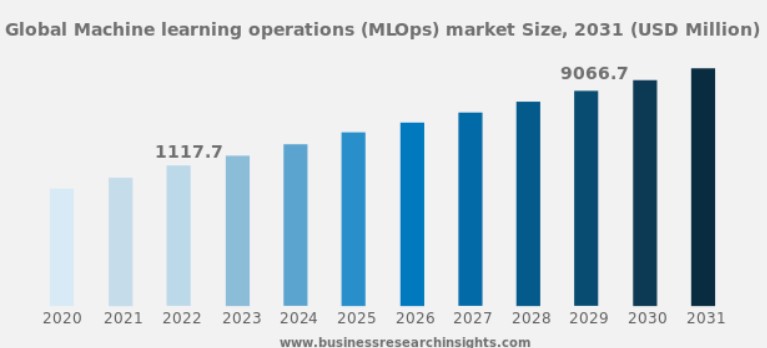
While MLOps is still relatively new, the AI community is doing a lot of work on this subject. One result is abundant new tools and techniques to help companies use MLOps effectively. We’ll take a deep dive and explore this and more. Let’s get started!
Understanding MLOps
If MLOps sounds familiar, you might be thinking of DevOps, a similar paradigm that’s been around since 2007. While MLOps borrows many principles of DevOps, it also addresses unique challenges specific to machine learning systems.
DevOps focuses on simplifying the software development lifecycle while bringing a rapid and continuously iterative approach to applications. MLOps uses the same principles to take machine learning models to production. In both cases, the outcome is higher software quality, faster patching and releases, and higher customer satisfaction.
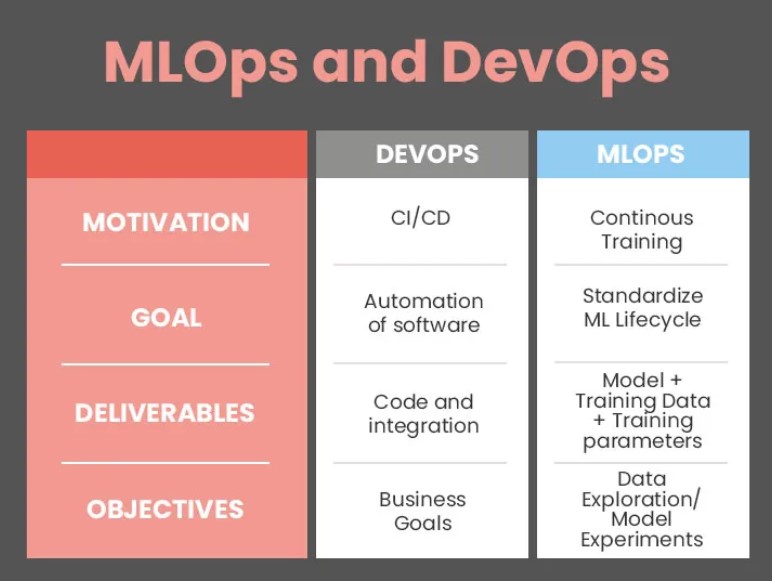
Key Components of MLOps
A few key components shape MLOps: data management, model development, model deployment, and monitoring and maintenance. Data management involves handling data from collection to cleaning and organising it for model training and evaluation. It also includes keeping track of different versions of the data.
Model development involves testing different machine learning algorithms and adjusting parameters to find the best one. MLOps tools can help you keep track of these tests and make it easy to repeat them if necessary.
Once a model is ready to use, it can be deployed. It’s also important to ensure the model can work in different production environments, such as the cloud or on devices. Containers are often used to make it easier to move the model around.
Finally, monitoring and maintenance can keep an eye on how well the model is working in the real world. Changes in the data might affect the model’s performance can be identified. Subsequently, updating the model becomes necessary to keep it working well over time. These key components form the basis of the MLOps lifecycle.
The MLOps LifeCycle
The MLOps lifecycle involves a series of stages and often forms an iterative loop. These stages are as follows:
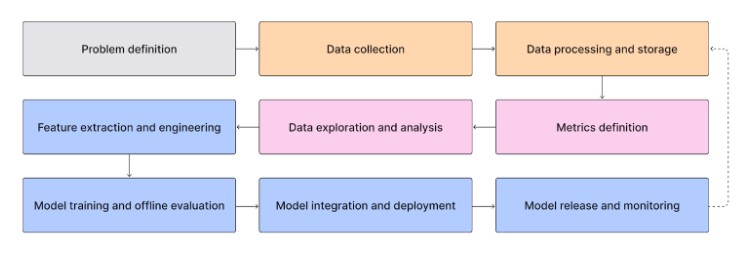
Problem Definition
The first step in the MLOps life cycle is clearly defining the business problem and the expected outcomes. The clearer the requirements, the easier it is to make the MLOps lifecycle support your business goals.
Data Collection and Processing
Then, data is collected for model training. Data might come from the product, such as user behaviour data, or from an external dataset. Typically, a data warehouse or data lake stores the collected data. To consolidate and clean the data, it is processed in batches or as a stream, depending on the company’s requirements and available tools.
Metrics Definition
Deciding on the right metrics is crucial. It’s about agreeing on how to measure if the model does what it’s supposed to do, and how well it does it. These metrics help everyone stay on target and make sure the final model adds real value to the business.
Data Exploration
This stage is where data scientists get to know the ins and outs of the data. They look for patterns, spot any oddities, and start thinking about what methods might work best for modeling. Groundwork about the data helps make informed decisions down the line.
Feature Extraction and Engineering
Feature extraction and engineering involve identifying and preparing the parts of the data that will serve as inputs to the model.
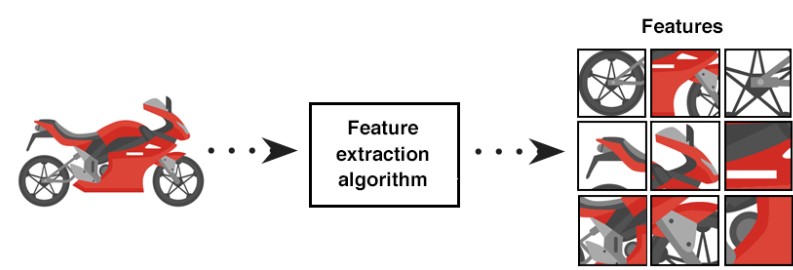
Data scientists determine which features are relevant, and engineers ensure these features can be consistently updated with new data. It’s a team effort to ensure the model has the best information to learn from.
Model Training and Offline Evaluation
In this phase, models are built and trained using most of the collected and processed data. They are then evaluated to select the best-performing approach. Offline evaluation helps fine-tune model parameters and ensure that the selected model can generalise well to new, unseen data.
Model Integration and Deployment
Once a model is validated and ready, it’s integrated into the product. Deployment usually occurs within a cloud infrastructure, such as AWS, enabling scalable and efficient model operation. This stage marks the transition of the model from development to real-world application, where it begins to deliver business value.
Model Release and Monitoring
After the model goes live, the work isn’t over. It must be watched closely to catch any hiccups or changes in performance over time. Ongoing vigilance helps in figuring out when the model needs a tune-up or a major update.
The lifecycle doesn’t end with monitoring. Insights gained from ongoing monitoring and the model’s operational performance often lead to new questions, adjustments in the model, or even revisiting the problem definition. This feedback loop is what makes the MLOps lifecycle iterative.
Now that we’ve understood how MLOps works and its key components, let’s explore the benefits of using MLOps.
Benefits of MLOps
Using MLOps offers many benefits to organisations working with machine learning and AI technologies. One major advantage is the faster deployment of machine learning models. MLOps automates testing, validation, packaging, and integration, reducing the time required to transition models from the lab to production environments. Another benefit is improved collaboration between data scientists and operations teams. By creating a collaborative environment, these teams can work together more smoothly, breaking down silos and reducing friction, which leads to more efficient project execution.

Adding testing, monitoring, and feedback loops throughout the machine learning lifecycle improves model quality and reliability. MLOps streamlines the early detection and correction of performance issues so that only the most robust and dependable models are put into production. Also, MLOps makes it possible to scale and maintain machine learning systems. It provides the necessary infrastructure and processes to manage growth in dataset sizes and model complexity.
Challenges in Implementing MLOps
Despite the many benefits MLOps offers, implementing MLOps brings its own set of challenges. For starters, integrating MLOps into existing workflows can be tricky. Many companies already have their ways of doing things, and fitting MLOps into the mix means figuring out how to deal with old legacy systems and making sure everything works together smoothly.
Another hurdle is model security and compliance. In regulated industries where data misuse and attacks are major concerns, this hurdle is crucial to get over. Plus, the successful adoption of MLOps requires a special blend of skills across software engineering, data science, and operations, which isn’t always easy to find.
Best Practices to Overcome Challenges
Through trial and error, the AI community has come up with best practices for overcoming these challenges.
Here are some effective strategies:
- Encourage Team Collaboration - Encourage open communication across all teams involved. Regular meetings and clear documentation can keep everyone on the same page.
- Streamline with Automation - Use automation to handle repetitive tasks, reducing errors and freeing time for strategic work.
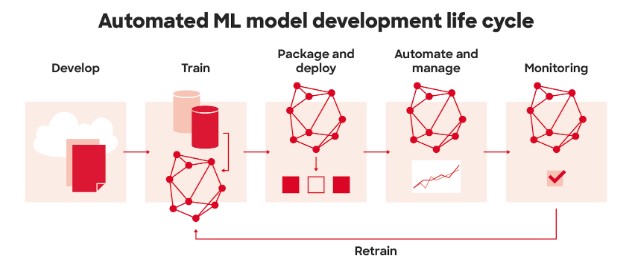
- Implement Continuous Monitoring - Keep an eye on your models after deployment to quickly catch and fix any issues.
- Stay Agile and Flexible - Adapt to the fast-paced nature of tech by staying flexible and ready to pivot as needed. Your models need to remain effective and relevant.
Tools and Technologies in MLOps
To successfully use MLOps, you can rely on specialised tools and technologies that assist with various stages of machine learning. Popular platforms like Amazon SageMaker and Google Cloud Vertex AI can manage the machine-learning process. Tools such as MLflow and Weights & Biases help track experiments and manage models, while DVC and Pachyderm are used for data versioning. Tools like Kubeflow and Seldon are utilised for deploying and serving models. Airflow and Prefect can manage complex ML workflows.
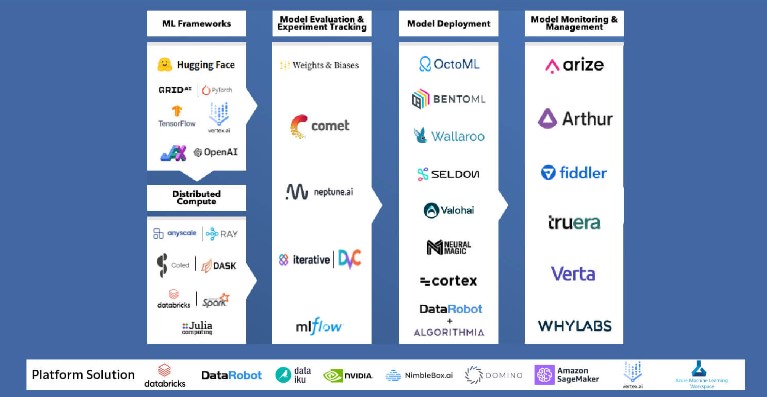
Choosing the right tools is crucial and depends on several factors, such as your organisation’s ML experience, cloud preferences, and existing tech stack. Avoiding tools that lock you into a single ecosystem and choosing flexible solutions instead is important. Integrating MLOps tools with your continuous integration and continuous delivery/continuous deployment (CI/CD) systems can automate testing and deployment processes. Starting with small projects and gradually introducing new tools is a good idea to avoid overwhelming your team.
Applications of MLOps
Here are some case studies of where MLOps are being applied.
Netflix
Netflix is a pioneer in the digital streaming industry. Netflix has led the way in using machine learning for personalised content suggestions. They use MLOps practices like automated model training, testing, and deployment pipelines to handle the complexity of their recommendation systems. They improved their recommendation algorithms consistently and offered customers a personalised viewing experience.

Uber
Uber is a global leader in ride-sharing and logistics. Uber created Michelangelo, an internal MLOps platform, to simplify how it deploys and manages machine learning models across its services. Michelangelo offers a single interface for data scientists to train, test, and deploy models, as well as monitor and update them easily. This platform has sped up Uber’s process of implementing new machine-learning models.
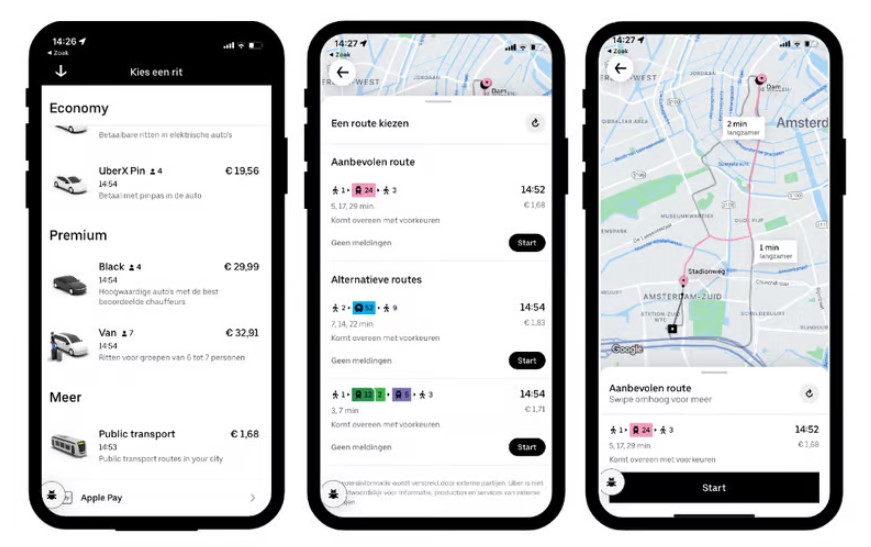
DoorDash
DoorDash is a leading food delivery service that uses MLOps to manage machine learning systems that optimise logistics operations, including order dispatching, delivery routing, and demand forecasting. Adopting MLOps has helped DoorDash to rapidly iterate and improve its ML models, delivering superior service to both customers and merchants.

The Future of MLOps
Several key trends are shaping the future of MLOps. One such trend is automation. Automated MLOps pipelines that can automate tasks like data preprocessing, model training, and deployment can simplify the entire machine learning workflow by reducing manual effort and speeding up the model deployment process.
Another trend is the mounting interest in edge computing. Edge computing can process data closer to its source. MLOps that support machine learning deployments at the edge by optimising model size and complexity are gaining traction.
As machine learning becomes more deeply embedded in both business and societal systems, these models must be used responsibly. MLOps is adapting by incorporating tools and processes that monitor models for fairness, transparency, and compliance with legal standards.
The future will focus on making models more efficient or easier to deploy while making them ethically sound and trustworthy. If this sounds like something you are interested in, we at TechnoLynx can help you incorporate MLOps into your solutions.
What We Can Offer as TechnoLynx
At TechnoLynx, we excel at building custom AI solutions for high-tech startups and SMEs. As a leading software research and development consulting company, we strive to solve your unique business challenges with the help of AI. Our expertise includes cutting-edge technologies like computer vision, GPU acceleration, generative AI, and IoT edge computing.
We also have extensive experience integrating Machine Learning Operations (MLOps) practices into our projects. We use MLOps to ensure AI models in our solutions are deployed, monitored and managed at scale.
Our approach is firmly rooted in ensuring legal compliance and advocating for developing safe, sustainable AI systems that stand the test of time and adhere to ethical standards. If you are looking for solutions that push the limits of AI, we can step in and help you out. Feel free to reach out and contact us.
Conclusion
MLOps provides a framework for successfully scaling machine learning initiatives from experimentation to real-world impact. By fostering collaboration, streamlining workflows, and emphasising monitoring and maintenance, MLOps helps models deliver continuous value in production environments.
In the increasingly competitive market of AI-driven businesses, MLOps is definitely a value add-on. The challenges of implementing MLOps are outweighed by the long-term benefits it provides.
By investing in the right tools, processes, and people, organisations can establish a robust MLOps foundation that drives innovation and creates tangible business value. Whether you are beginning your ML journey or loo
Sources for images:
- Educative, Inc., 2024. What is feature extraction? Educative.
- Envato Elements (n.d.) Team work, hands or creative business people in a meeting planning a logo, branding or marketing co..
- Graham, M., 2021. DoorDash Introduces Search-Page Ads for Restaurants. The Wall Street Journal.
- Kothari, S., 2022. MLOps Lifecycle. Fiddler AI Blog.
- Machine Learning Operations (MLOps) market size, share, growth, and industry analysis, by grade (on-premise, cloud and others), by application (BFSI, healthcare, retail, manufacturing, public sector and others), and regional insights and forecast to 2031 (2024) Machine Learning Operations (MLOps) Market Size, Growth, 2031. (Accessed: 29 March 2024).
- Niemelä, M. and Sallinen, A., 2020. MLOps: from data scientist’s computer to production. Solita Data Blog/
- NimbleBox, Inc., 2022. Best MLOps Tools: What to Look for and How to Evaluate Them. NimbleBox Blog.
- Sama, A. and Saptarina., 2020. Netflix and the Recommendation System. The Startu.
- Testhouse, 2021. DevOps Vs MLOps Comparative Analysis You Should Know. Testhouse Blog.
- Uber, 2022. Now in the Uber app you can plan your trip by public transport. Uber Blog.
References:
- Carmo, G., Chow, E., Kamath, N., Modi, A., Ge, J., Bai, W., de Campos, J., Liu, L., Delgado, P., Jindal, M., Chen, B., Iyengar, V., Griggs, K., Ziai, A., Padmanabhan, P. and Taghavi, H., 2023. Scaling Media Machine Learning at Netflix. Netflix Technology Blog.
- Jha, A. and Paranjape, N., 2023. Transforming MLOps at DoorDash with Machine Learning Workbench. DoorDash Engineering Blog.
- Machine Learning Operations (MLOps) market size, share, growth, and industry analysis, by grade (on-premise, cloud and others), by application (BFSI, healthcare, retail, manufacturing, public sector and others), and regional insights and forecast to 2031 (2024) Machine Learning Operations (MLOps) Market Size, Growth, 2031. (Accessed: 29 March 2024).
- Wang, J., Li, J., Zhang, Y. and Bai, Y., 2021. Continuous Integration and Deployment for Machine Learning Online Serving and Models. Uber Blog.












